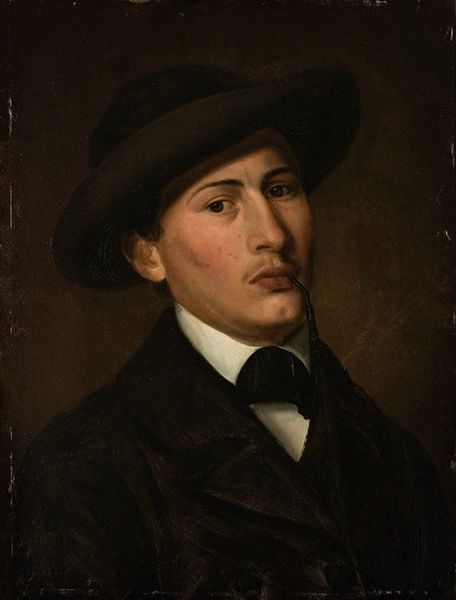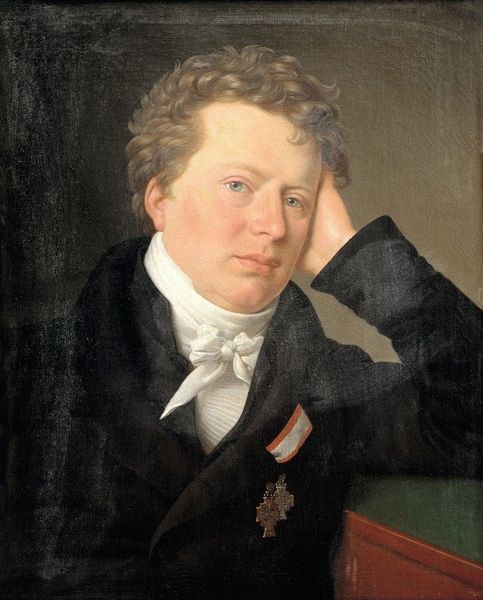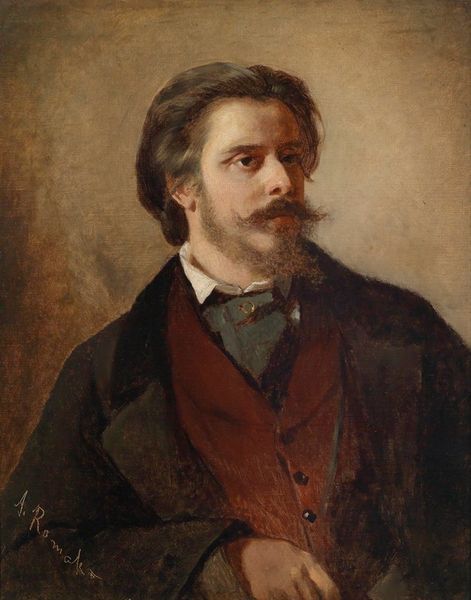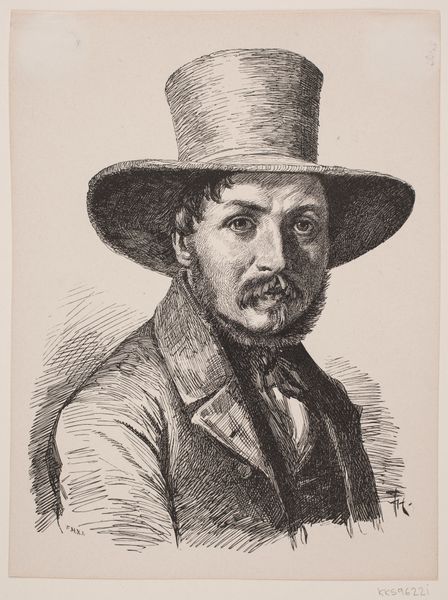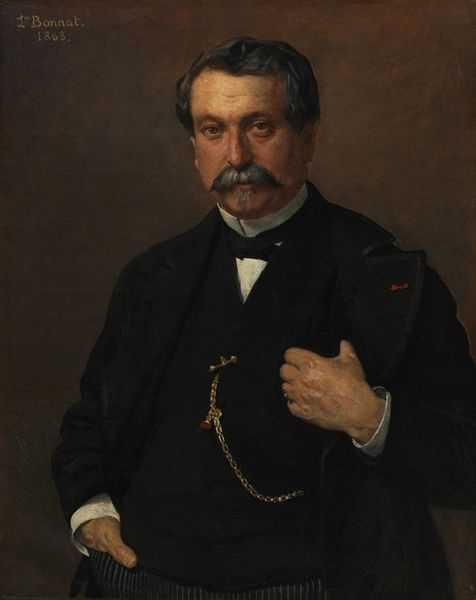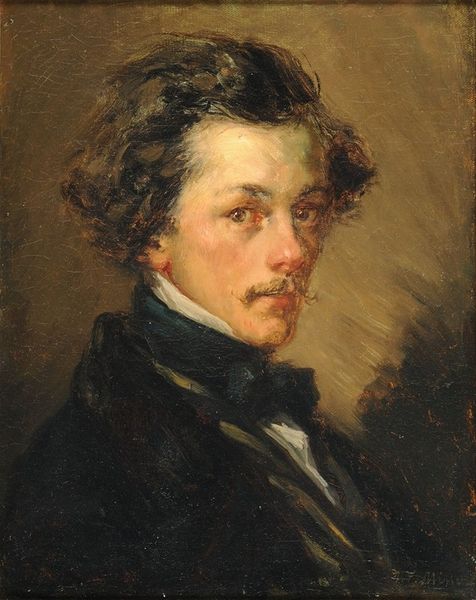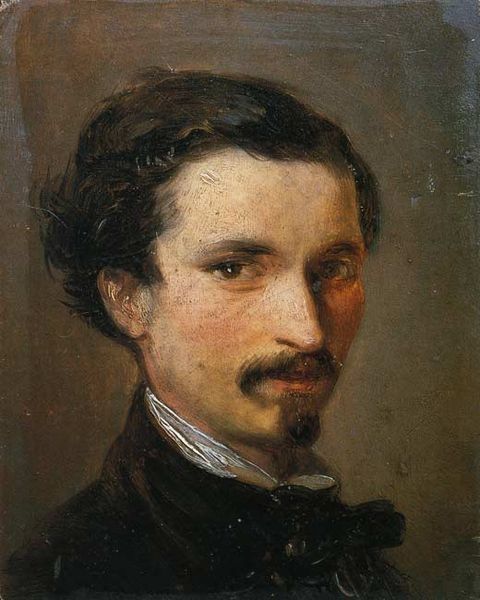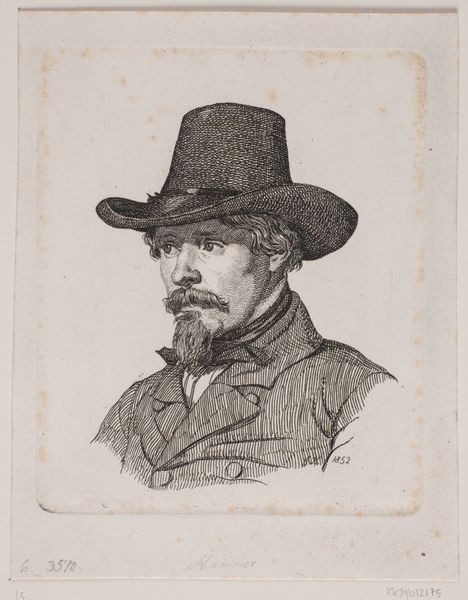
#
figurative
#
portrait reference
#
portrait head and shoulder
#
animal portrait
#
animal drawing portrait
#
portrait drawing
#
facial portrait
#
portrait art
#
fine art portrait
#
celebrity portrait
#
digital portrait
Copyright: Public Domain: Artvee
Editor: So, here we have Wilhelm Marstrand’s "The Painter Christen Købke," created in 1839. It’s an oil painting, quite traditional. The first thing that strikes me is how…plain it is. It’s a straightforward portrait. What do you see in this piece? Curator: Beyond the surface, I see a commentary on the materials available to and affordable by an artist in 1839. Notice the relatively subdued palette – this isn’t about ostentatious pigments. Think about the labor involved in preparing these paints. It points to the economics of portraiture at that time. How does the choice of such a plain style speak to ideas of artistic labor and patronage during the Biedermeier period? Editor: That's interesting, I hadn’t considered that. So, you're saying that the "plainness" could be a deliberate choice, reflecting limitations of the available art market? Curator: Precisely! And perhaps even a statement. Is the focus here the subject, or a display of virtuosity through costly materials? The materiality argues against the latter. Look at the application of the paint itself – it is relatively unadorned; a directness, perhaps of means and message. We need to consider how and why certain materials came to be valued over others during this era. Editor: I see your point. The emphasis isn’t on showing off skill with fancy colors but perhaps making art accessible. Were materials like these considered ordinary or… common? Curator: They weren't necessarily common, but were certainly determined by economic factors. More so, by what the artist COULD acquire and translate given financial constraints and social demand. The materiality points to art's place within systems of production and consumption. Editor: So, what looks like simplicity is really hinting at larger economic and social structures affecting artistic creation. Thank you. It changed how I see it now! Curator: Exactly, and looking beyond the subject, this lens truly helps us see how artwork and its place in history is far more complex.
Comments
No comments
Be the first to comment and join the conversation on the ultimate creative platform.


